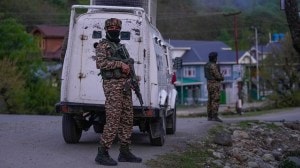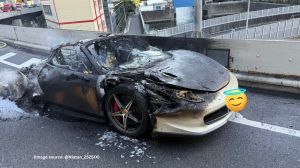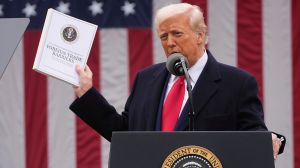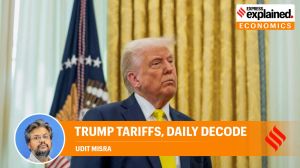UPSC Key: National Investigation Agency, Land Port and General Data Protection Regulation (GDPR)
Why the Start-up ecosystems in India and China is relevant to the UPSC exam? What is the significance of topics such as coal as a critical mineral, Judicial accountability and largest land port in South Asia, on both the preliminary and main exams? You can learn more by reading the Indian Express UPSC Key for April 11, 2025.
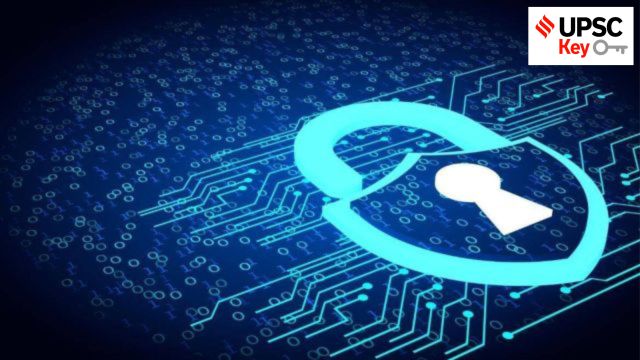 UPSC Key April 2025: Here's what you should be reading from the April 11, 2025 edition of The Indian Express
UPSC Key April 2025: Here's what you should be reading from the April 11, 2025 edition of The Indian Express
Important topics and their relevance in UPSC CSE exam for April 11, 2025. If you missed the April 10, 2025 UPSC CSE exam key from the Indian Express, read it here
THE WORLD
US, Russia conclude ‘positive’ talks on diplomatic missions
Syllabus:
Preliminary Examination: Current events of national and international importance
Mains Examination: General Studies II: Bilateral, regional and global groupings and agreements involving India and/or affecting India’s interests.
What’s the ongoing story: The United States and Russia both said that they had made progress toward normalising the work of their diplomatic missions, with the United States saying it was still concerned about a Russian policy prohibiting the employment of local staff.
Key Points to Ponder:
• Russia-US bilateral ties—Discuss
• Why relations between the two nuclear powers were complicated in the recent years?
• Discuss the historical and geopolitical factors that led to the Russia-Ukraine war.
• What was US stand on Russia-Ukraine war?
• Evaluate the impact of Trump’s past and potential future foreign policy stance on US-Russia relations.
• Analyse the significance of India’s neutral stance in the Russia-Ukraine conflict. How does it align with India’s foreign policy principles?
Key Takeaways:
• The meeting of the U.S. and Russian delegations in Istanbul followed initial talks in February, after the war in Ukraine triggered the biggest confrontation between Moscow and the West since the depths of the Cold War.
• The talks were led by Deputy Assistant Secretary of State for Russia and Central Europe Sonata Coulter and Russia’s new ambassador to Washington, Alexander Darchiev.
• The U.S. delegation spent some six hours at the Russian consulate building in central Istanbul for the talks, a Reuters witness said. A State Department spokesperson had said on Tuesday that Ukraine was not on the agenda.
• The State Department said talks continued “the constructive approach” established in the February 27 meeting.
• It said this was the key impediment to maintaining stable and sustainable staffing levels at the U.S. Embassy in Moscow.
• Russia’s ambassador to the United States said that the talks had made it possible to make progress in normalising the two countries’ diplomatic missions, Russian state news agency TASS reported.
Do You Know:
• The focus on restoring the work of diplomatic missions comes after relations between the two nuclear powers were complicated by years of disputes, mutual claims of intimidation and the freezing of diplomatic property.
• Both Moscow and Washington have complained in recent years about the difficulties of getting credentials for their diplomats, making the operation of their embassies extremely difficult.
• Russia has said that even paying diplomats has become difficult due to Western restrictions, while U.S. diplomats say their movements are restricted in Russia. Both sides have complained of intimidation.
• Washington has put six Russian properties under restrictions, including the Killenworth estate on Long Island, the Pioneer Point “dacha” in Maryland, the Russian consulates in San Francisco and Seattle and the trade missions in Washington and New York.
Other Important Articles Covering the same topic:
📍US President Trump says he has spoken to Putin about ending Ukraine war
FRONT PAGE
Effective tariff on China now 145%: US; EU hits 90-day pause
Syllabus:
Preliminary Examination: Current events of national and international importance.
Mains Examination: General Studies III: Effect of policies and politics of developed and developing countries on India’s interests
What’s the ongoing story: The United States has escalated its tariff war with China, as the White House confirmed Thursday that total US tariffs on Chinese imports now stands at 145 per cent, CNBC reported.
Key Points to Ponder:
• What is the meaning of tariff war?
• The United States has escalated its tariff war with China—What is the present scenario?
• US tariffs on Chinese imports now stands at 145 percent—What is the math behind this?
• What is China’s stand on the US tariffs?
• Why Beijing is not backing down on tariffs?
• What it means for India?
Key Takeaways:
• The move follows a new executive order from Donald Trump raising tariffs to 125 per cent, up from 84 per cent. It also includes an additional 20 per cent tariff specifically targeting fentanyl-related imports, previously imposed on China, pushing the cumulative tariff rate up’.
• Trump on Wednesday reversed his sweeping tariffs on most nations for at least 90 days. However, he ramped up pressure on China, on which the pause does not apply, further escalating a high-stakes confrontation between the world’s two largest economies, who have traded tit-for-tat tariff hikes repeatedly over the past week.
• Meanwhile, China refused to back down against America’s aggression, and its 84 per cent tariffs on US imports came into effect at 12.01 pm on Thursday, according to the Chinese state news agency, Xinhua.
• China has vowed to resist what it calls “coercive” tactics. A Chinese Ministry of Commerce spokesperson reiterated Thursday that while Beijing remains open to dialogue, it will only negotiate on the basis of mutual respect and equality.
• In a show of defiance, China’s foreign ministry accused the US of “bullying” and warned that Trump’s approach would end in failure.
Do You Know:
• By pausing reciprocal tariffs on most countries for 90 days, US President Donald Trump has attempted to narrow what had become an unprecedented trade war between the US and most of the world to a showdown between the US and China now.
• The looming slugfest between the world’s two largest economies is casting a dark shadow over global trade, with analysts raising the spectre of an American recession.
• China and the United States edged dangerously close to a full-blown trade war on Tuesday after President Donald Trump announced a staggering 104 per cent tariff on all Chinese imports. Locked in an escalating showdown, neither side showed signs of backing down — with Beijing vowing to resist US pressure “to the end.”
• Trump initially imposed a 34 per cent tariff on Chinese goods, which was swiftly met with an equivalent retaliatory measure by Beijing. In response, the US added another 50 per cent in duties. When combined with earlier levies from February and March, the total tariff burden on Chinese imports under Trump’s second term now stands at 104 per cent, bringing fears of a near-embargo scenario.
• China, which was America’s second-largest source of imports last year, shipped $439 billion worth of goods to the US, compared to $144 billion in American exports to China. The rising tariffs now threaten to hit domestic industries hard, with businesses warning of cost surges, layoffs, and reduced competitiveness.
Other Important Articles Covering the same topic:
📍Why Trump blinked, why he is now focused only on China
📍India set to ‘expedite’ relief on quality norms as sought by US & EU
📍Trade surplus result of structural issues in the US economy: China
India’s 16-year wait ends: 26/11 conspirator Tahawwur Rana flown to Delhi, will face trial
Syllabus:
Preliminary Examination: Current events of national and international importance.
Mains Examination: General Studies II: Bilateral, regional and global groupings and agreements involving India and/or affecting India’s interests.
What’s the ongoing story: More than 16 years after the 26/11 Mumbai terror attacks, Tahawwur Rana, one of the key conspirators, was finally extradited to India from the US to face trial.
Key Points to Ponder:
• The 26/11 Mumbai terror attacks—What you know about the same?
• What was the role of Rana in 26/11 terror attacks?
• What is the story of Rana’s arrest and the legal process that followed?
• What is the National Investigation Agency (NIA)?
• How National Investigation Agency (NIA) is different from other investigative agencies?
• Can a State Government request the NIA to take over the investigation of a case?
• What is the India-US extradition treaty?
• How did the provisions of the treaty play out in Tahawwur Rana’s case?
• Before Rana, have there been other extraditions to India from the US on charges of terrorism?
• Has the US ever rejected a request for extradition from India?
Key Takeaways:
• An associate of Lashkar-e-Taiba scout David Coleman Headley, Rana was formally arrested by the National Investigation Agency (NIA) soon after completion of legal formalities at the airport. His medical examination too was done at the airport.
• A Pakistani-Canadian businessman who once served in the Pakistan Army Medical Corps, Rana is accused of providing crucial logistical support to the terrorists. He was arrested in Chicago in October 2009, 11 months after the Mumbai attacks.
• In a statement, the NIA said it “successfully secured the extradition of Tahawwur Hussain Rana, the mastermind of the deadly 26/11 Mumbai terror attacks, after years of sustained and concerted efforts to bring the key conspirator behind the 2008 mayhem to justice”.
• Rana’s extradition comes two months after US President Donald Trump, with Prime Minister Narendra Modi by his side, told reporters at the White House: “Today, I am pleased to announce that my administration has approved the extradition of one of the plotters, one of the very evil people of the world, connected to the horrific Mumbai terrorist attack, to face justice in India. So, he is going back to India to face justice.”
Do You Know:
• India-US extradition treaty which was signed in June 1997, established a legal framework for the extradition of individuals charged with or convicted of serious offences in either country.
• An offence is extraditable if it is punishable by imprisonment for more than one year under the laws of both countries.
• Political offences are not extraditable under the India-US treaty. However, certain actions such as the murder or other willful crime against a Head of State/ Government or a member of their family, aircraft hijacking and aviation sabotage, crimes against internationally protected persons, and hostage-taking, etc., are not construed as “political offences” under the treaty.
• As of 2023, India had “extradition treaties” with 48 countries, and “extradition arrangements” with another 12.
Other Important Articles Covering the same topic:
📍The story of Mumbai attacks conspirator Tahawwur Rana
GOVT & POLITICS
Bangla border port saw sharp uptick before India halted transshipment
Syllabus:
Preliminary Examination: Current events of national and international importance.
Main Examination: General Studies II: India and its neighbourhood- relations.
What’s the ongoing story: Before India terminated the transshipment facility for Bangladesh’s export cargo, trucks and consignments saw a sharp uptick at Petrapole, the nation’s largest land port, data shows.
Key Points to Ponder:
• Map Work– Petrapole
• Which is the largest land port in South Asia?
• What is a landport?
• What is the work of Land Port Authority of India?
• Map Work-Northeast India
• “India’s northeast is a prisoner of geography”—Discuss
• What exactly Bangladesh interim government’s chief advisor Professor Muhammad Yunus has said about Northeast India?
Key Takeaways:
• New Delhi halted transshipment facilities for the neighbouring country on April 8, days after Bangladesh Chief Adviser Muhammad Yunus advocated the extension of the Chinese economy around the strategically important Northeast India region.
• India first allowed transshipment of export cargo from Bangladesh to third countries using Indian Land Customs Stations and subsequently Indian ports and airports on June 29, 2020.
• According to sources in the Petrapole Land Port’s customs department, in the financial year 2023-24, 3,373 trucks with transshipment commodities or export cargo entered Petrapole from Bangladesh, with 4,733 consignments valued at `2,357.27 crore.
• In FY 2024-2025, 4,686 trucks (a 39% increase) with transshipment commodities entered Petrapole with 7,772 consignments valued at `3,446.66 crore.
• “The facility was extended by our country to Bangladesh in 2020, but it saw little response that year and in 2021 and 2022. In 2023, though, transshipment consignments arrived in good numbers, and there was a sharp increase thereon. Primarily, ready-made garments come to us as commodities and are then flown to European countries like Spain. The rush of consignments is seen before the European festive season, including Christmas,” said a senior Customs official at Petrapole.
• Officials explained that trucks from Bangladesh first carry the consignments to Petrapole, where they are checked by land port and customs authorities. Indian trucks then take them to Kolkata or Delhi airports.
Do You Know:
• The largest land port in South Asia, Petrapole is situated on the Indo-Bangladesh border, about 80 kilometres from Kolkata. In 2023-2024, it recorded trade worth `30,42,092 crore and the movement of 23,48,707 people between the two countries.
• Days after Bangladesh Chief Adviser Muhammad Yunus advocated the extension of the Chinese economy around the strategically important Northeast India region, New Delhi has terminated the transshipment facility for Bangladesh’s export cargo — a move that could potentially disrupt Bangladesh’s trade with several countries.
• The decision was announced through a notification issued by the Central Board of Indirect Taxes and Customs.
• During his March 26-29 visit to China, Yunus had said that with Northeast India being “landlocked”, Dhaka was the “only guardian of the ocean for all this region”. This statement was widely interpreted as an attempt by Dhaka to assert its leverage over access to Northeast India — a matter of concern for Delhi. Yunus’s efforts to portray Beijing as a new strategic partner further complicated the already fragile India-Bangladesh relationship.
• Think tank GTRI explained that the 2020 circular had permitted the transhipment of export cargo from Bangladesh to third countries using Indian Land Customs Stations en route to Indian ports and airports, thereby enabling smooth trade flows for Bangladesh’s exports to other countries.
Other Important Articles Covering the same topic:
📍Bangladesh is drawing closer to Pakistan and China. What should India do?
Previous year UPSC Prelims Question Covering similar theme:
1. With reference to river Teesta, consider the following statements: (UPSC CSE 2017)
1. The source of river Teesta is the same as that of Brahmaputra but it flows through Sikkim.
2. River Rangeet originates in Sikkim and it is a tributary of river Teesta.
3. River Teesta flows into Bay of Bengal on the border of India and Bangladesh.
Which of the statements given above is/are correct?
(a) 1 and 3 only
(b) 2 only
(c) 2 and 3 only
(d) 1, 2 and 3
Previous year UPSC Mains Question Covering similar theme:
📍Analyze internal security threats and transborder crimes along Myanmar, Bangladesh and Pakistan borders including Line of Control (LoC). Also discuss the role played by various security forces in this regard. (2018)
THE EDITORIAL PAGE
Syllabus:
Preliminary Examination: Indian Polity and Governance
Main Examination: General Studies II: Structure, organization and functioning of the Executive and the Judiciary—Ministries and Departments of the Government; pressure groups and formal/informal associations and their role in the Polity.
What’s the ongoing story: Amit Desai Writes: Like other citizens, judges are entitled to presumption of innocence. Justice must be done, not just in outcome, but also in method
Key Points to Ponder:
• Who is Justice Yashwant Varma
• Why Justice Yashwant Varma is in news?
• What you know about Justice Varma case?
• Discuss the significance of judicial accountability in ensuring the independence of the judiciary in India.
• The Justice Varma case highlights what?
• The judiciary is expected to remain impartial and independent of political influence—analyse judicial appointments and removals impact this independence.
Key Takeaways:
Amit Desai Writes:
• Public confidence in the Indian judiciary appears to be on increasingly fragile ground. According to the latest C-Voter-India Today survey, only about 30 per cent of those surveyed said they fully trust the judiciary, while 12 per cent trust it only somewhat. Alarmingly, nearly 48 per cent reported having no trust in it at all. These findings reflect a growing crisis of institutional confidence.
• Justice Abhay S Oka recently echoed this concern during a lecture on “Access to Justice”. He remarked: “We kept patting our backs that citizens trust the courts, but we have to ask if citizens are saying that. I have been to villages etc. The statement that common man has full faith in judiciary may not be entirely correct.”
• Recent allegations concerning Justice Yashwant Varma have sparked public scrutiny and provoked sharp commentary.
• The judiciary, as an institution, must be protected from premature judgements that risk eroding public trust. For sitting high court judges, the in-house inquiry procedure requires the CJI to initiate a fact-finding probe by a three-member committee comprising two chief justices of high courts and one high court judge. ensuring that complaints are dealt with systematically and confidentially.
• Section 17A of the Prevention of Corruption Act bars investigation without prior sanction. Judicial interpretation of the requirement for a preliminary inquiry or a prior sanction led to the insertion of Section 6A in the Delhi Special Police Establishment Act, requiring prior approval before initiating investigations against senior public officials.
Do You Know:
Amit Desai Writes:
• Section 19 of the same Act requires sanction before a court takes cognisance. The Lokayukta Act mandates a preliminary inquiry before proceeding against high-level officials. The Lokayukta is headed by a retired SC judge, and at least half the members are required to be judicial members, ensuring judicial oversight for preserving institutional independence while maintaining robust scrutiny.
• When Parliament contemplates impeaching a judge, the Judges (Inquiry) Act, 1968 must be followed. It contemplates a preliminary investigation by a committee comprising an SC judge, a chief justice of a high court, and a distinguished jurist. The requirement of impartial fact-finding before action is consistent across all levels of the judiciary.
• The Constitution Bench in Lalitha Kumar’s case has provided for preliminary inquiries in relation to public servants in corruption cases as well as private persons in matrimonial and commercial disputes and doctors in medical negligence cases. Recently, the SC has mandated a preliminary inquiry to protect journalists and others in freedom of speech cases. Such safeguards exist not to protect the guilty, but to ensure procedural fairness. The judiciary deserves no less.
• A key tenet of judicial ethics, as outlined in the Restatement of Values of Judicial Life, is that judges must remain impartial and avoid controversies. Public discourse on allegations risks undermining the judiciary’s independence. Hence, institutional mechanisms — not public commentary — must address complaints.
Other Important Articles Covering the same topic:
📍Behind fire & cash, the burning issue
UPSC Previous Year Prelims Question Covering similar theme:
2. With reference to Indian Judiciary, consider the following statements (UPSC Prelims GS1 2021)
1. Any retired judge of the Supreme Court of India can be called back to sit by the Chief Justice of India with prior permission of the President of India.
2. A High court in India has the power to review its own judgement as the Supreme Court does.
Which of the statements given above is/are correct?
(a) 1 only
(b) 2 only
(c) Both 1 and 2
(d) Neither 1 nor 2
Syllabus:
Preliminary Examination: Current events of national and international importance.
Mains Examination: General Studies II: Effect of policies and politics of developed and developing countries on India’s interests
What’s the ongoing story: The commercial and compliance havoc wrought by the EU General Data Protection Regulation will seem mild in comparison to the Digital Personal Data Protection Act, unless fundamental design changes are introduced.
Key Points to Ponder:
• What is the European Union’s EU’s General Data Protection Regulation (GDPR)?
• When did the European Commission introduce (GDPR)?
• What is the purpose of the general data protection regulation (GDPR)?
• What are the Provisions Related to Data Governance in India?
• What India can learn from European Union’s EU’s General Data Protection Regulation GDPR?
Key Takeaways:
• An interesting report emerged from the EU on April 3 regarding the European Commission’s plans to slash the EU General Data Protection Regulation (GDPR) — its most famous, and beloved, privacy regulation.
• The EU is considering revising the GDPR because it creates a cumbersome and costly compliance regime. For instance, a study by the German Chamber of Commerce and Industry (GCCI) found that around 75 per cent of German businesses still had to put in high to extreme efforts to comply with the law, years after its implementation.
• Another study revealed that the GDPR induced about a third of available apps on the Google Play Store to shut down their operations, and in the months following its implementation, the entry of new apps fell by half. A 2022 paper by Oxford University economists found that the GDPR shrank the profits of European businesses by 8.1 per cent.
• India, for its part, had reservations about the GDPR model. Though the initial draft of our privacy law closely mirrored the GDPR, reports suggest that efforts were made to ensure that the former was not as compliance-heavy as the latter. For instance, in 2022, then minister of state Rajeev Chandrasekhar suggested that the GDPR was not innovation-friendly, and a little too “absolutist”.
• Unfortunately, though the DPDPA differs from the GDPR, it is mostly in ways that are more stringent, less clear, and more difficult to implement. For instance, the DPDPA omits legitimate interest as a legal basis for processing data without user consent.
• Legitimate interest allows data to be used for reasonable purposes such as fraud prevention, system security, or even marketing, without troubling users for consent each time. In the EU, even journalists rely on legitimate interest to access records for investigative reporting on financial crimes.
• The DPDPA also does not include contractual necessity as a legal basis for processing data without user consent, making it impossible to fulfil digital transactions or services that involve third parties.
Do You Know:
• According to Investopedia, The General Data Protection Regulation (GDPR) is a legal framework that sets guidelines for the collection and processing of personal information from individuals who live in and outside of the European Union (EU).
Approved in 2016 and put into effect in 2018, the GDPR is the toughest security and privacy law in the world. It aims to give consumers control over their own personal data by holding companies responsible for the way they handle and treat this information.
• It replaced an earlier law, the Data Protection Directive, and was set up to regulate the way companies process and use the personal data they collect from consumers online. It also has rules in the way that information is moved, whether that’s partly or entirely through automated means.
The law makes it difficult for companies to mislead consumers with confusing or vague language when they visit their websites.
Other Important Articles Covering the same topic:
📍General Data Protection Regulation (GDPR): Meaning and Rules
UPSC Previous Year Prelims Question Covering similar theme:
3. Which of the following adopted a law on data protection and privacy for its citizens known as General Data Protection Regulation’ in April 2016 and started implementation of it from 25th May, 2018? (2019)
(a) Australia
(b) Canada
(c) The European Union
(d) The United States of America
THE IDEAS PAGE
A deep-tech revolution is on way
Syllabus:
Preliminary Examination: Economic and Social Development
Mains Examination: General Studies II: Government policies and interventions for development in various sectors and issues arising out of their design and implementation.
What’s the ongoing story: Pawan Kumar Chandana Writes: Investments in deep tech R&D have pushed innovation. India must build on this momentum
Key Points to Ponder:
• What exactly Commerce Minister Piyush Goyal had said about start-up ecosystems in India and China?
• Start-up ecosystems in India and China—Compare and contrast
• One area where India has managed to put itself on the global map is the software-as-a-service (SaaS) sector—Discuss
• What are the issues and challenges which are commonly associated with India’s startup ecosystem?
• Can you list out some government initiatives which are aimed at supporting India’s startup ecosystem?
• The term “valuation bubble” in the context of startups refers to what?
• While startups are engines of innovation and employment, they face challenges like valuation inflation and governance issues—Discuss
• What are the key risks posed by unsustainable startup practices in India?
• What structural reforms and ecosystem support are necessary for India to sustain startup?
Key Takeaways:
Pawan Kumar Chandana Writes:
• Commerce Minister Piyush Goyal’s recent statements on the shortage of deep-tech startups should be seen in this light. It’s tough love — a bugle call to action, not unlike Eisenhower’s.
• Deep tech is not just a buzzword; it’s rooted in scientific and technological breakthroughs. It’s the backbone of transformative industries. It is what leads to achievements such as a rocket booster being caught mid-air by mechanical chopsticks; or a seemingly simple chatbot that can produce code, poems, and a complete business proposal; or a miraculous drug that can tackle everything from obesity to depression.
• This is a field that’s currently being led by the US and China. According to a recent analysis by the World Intellectual Property Organisation, China filed over 38,000 generative AI patents between 2014 and 2023 — six times more than the US. A study by the Australian Strategic Policy Institute (ASPI) shows China leads globally in 57 out of 64 critical technologies.
• Annually, the US, the UK, Germany and Japan spend over 3 per cent of their GDP on R&D. China allocates just over 2.68 per cent; India spends under 1 per cent. But it isn’t all bad. Advancements in deep tech are decadal projects, and India is stepping up — albeit belatedly.
Do You Know:
• Commerce Minister Piyush Goyal’s comments on the start-up ecosystems in India and China and how Indian companies focus on sectors like online deliveries and betting apps while businesses in China address electric mobility and artificial intelligence (AI) have helped turn the light on a crucial issue that has seldom been debated: how India’s start-up ecosystem is the third largest in the world after the United States and China but is marked by fundamental differences.
• Speaking at a start-up event earlier this week, Goyal showed a slide comparing start-ups in India and China, and said that Indian startups are busy making “food delivery apps, fancy ice cream & cookies, instant grocery delivery, betting & fantasy sport apps and reels & influencer economy.” On the other hand, the start-ups in China are working on “EV & battery tech, semiconductors and AI, robotics and automation, global logistics & trade and deep tech & infrastructure.”
• Goyal’s remarks strike many an echo. In private, government officials have often emphasised the importance of building Indian-owned intellectual property (IP), which is currently severely restricted in terms of making much commercial sense. Very few Indian companies hold important IP in cutting edge sectors, unlike their Chinese counterparts. Some government schemes like the design linked incentives for chips are trying to change that. The gap, though, is widening.
• China is considered to be the biggest frontier in electric mobility, with its companies like BYD and Li Auto, having considerable advantage over even some American and European rivals like Tesla and Volkswagen. India lags far behind the Chinese in terms of battery technology, and is largely a consumer of innovation that took place in China. In fact, many believe that India will likely be the final frontier for internal combustion engines.
• In AI, while American companies — including start-ups like OpenAI and Anthropic — have so far dominated, China has managed to create a global sensation with Deepseek, which showed the world that a good AI model can be created at a fraction of the cost than what the world believed earlier. Meanwhile, in India, there is yet a global standard model to be launched, with the government of India currently evaluating some proposals.
• In e-commerce (including quick commerce and food delivery), India has managed to create giant companies like Flipkart, Zomato, Swiggy, Myntra, Blinkit and Zepto. These companies, some of which are also publicly listed, have capitalised on growing access to the Internet that several Indians enjoy today, with a particular focus on urban areas, where people have some leeway for discretionary spending. However, these start-ups are predominantly domestic facing, with a majority of their business coming from India.
• In contrast, China has managed to build global-level businesses in the online services and consumer Internet space, with companies like Bytedance’s TikTok and e-retailers Shein and Alibaba servicing users across the world. In manufacturing, China has cemented itself as the factory of the world, especially in tech manufacturing.
Other Important Articles Covering the same topic:
📍Why Piyush Goyal’s cautionary note on start-ups strikes many an echo
📍Piyush Goyal is right. India needs an ecosystem that better enables deep-tech innovation
UPSC Previous Year Prelims Question Covering similar theme:
4. What does venture capital mean? (2014)
(a) A short-term capital provided to industries
(b) A long-term start-up capital provided to new entrepreneurs
(c) Funds provided to industries at times of incurring losses
(d) Funds provided for replacement and renovation of industries
ECONOMY
Why the Donald Trump administration wants to make coal a ‘critical mineral
Syllabus:
Preliminary Examination: Current events of national and international importance.
Mains Examination: General Studies II: Effect of policies and politics of developed and developing countries on India’s interests.
What’s the ongoing story: In a bid to boost coal production in the United States, President Donald Trump has designated the carbon-based fuel as a “mineral” and instructed officials to determine whether it meets the definition of a “critical mineral”.
Key Points to Ponder:
• What is considered a critical mineral?
• What type of mineral is a coal?
• Is coal a critical mineral?
• How does coal contribute to energy security?
• Why Trump administration want to designate coal as a ‘critical mineral’?
Key Takeaways:
• The Trump administration has also removed red tape around coal mining and scrapped the mandatory use of emissions-control technologies in coal-fired plants, as part of efforts to revive America’s coal industry, which peaked in 2008.
• In other parts of the world, too — notably India and China — reliance on coal and thermal power has surged, primarily to balance the grid. In 2024-25, India’s coal production crossed the 1-billion tonne mark for the first time.
• Increasing coal production is closely linked to Trump’s ambitions of a manufacturing revival in the US, with a focus on the steel industry. At the same time, the coal push also seeks to help meet the energy requirements of frontier technologies such as artificial intelligence (AI).
• Still, Trump’s embrace of coal marks a sharp break from a decade of US energy policy that cut coal’s share in power generation from around 40 per cent in 2014 to just 15 per cent last year.
• On March 20, the Trump administration put out an executive order defining “minerals” for which extraction projects will be prioritised. Less than three weeks later, on April 8, another executive order added coal to that list.
• The order also directed senior officials to examine whether coal used in steelmaking — coking coal — could be formally classified as both a “critical mineral” and a “critical material”.
Do You Know:
• Under the US Energy Act of 2020, a critical material is defined as a “non-fuel mineral, element, substance, or material,” while a critical mineral is defined broadly as any “mineral, element, substance, or material” that meets the criteria for criticality.
• In the US, criticality is defined by whether the material serves an essential role in energy technologies and whether its supply is at a high risk of disruption.
• If the US follows through on classifying coal as a critical mineral, it would be among the first countries to do so. The European Union already includes coal in its list of “critical raw materials,” alongside high-demand minerals such as lithium, cobalt, and rare earth elements.
• The idea has also gained traction in India. In a recent research report submitted to the NITI Aayog, professor R Srikanth of the National Institute of Advanced Studies called for classifying coking coal as a critical mineral to strengthen domestic supply chains.
• In one of the four energy-related executive orders issued on Tuesday, the Trump administration also emphasised grid stability as demand for power surges, led by AI data centres. Unlike renewable energy capacities such as solar and wind, which are variable in nature, coal-fired capacities can provide baseload support to the grid at all times.
Other Important Articles Covering the same topic:
📍Govt should include coking coal in list of critical minerals to boost production: Niti Report
UPSC Previous Year Prelims Question Covering similar theme:
5. In India, the steel production industry requires the import of (2015)
(a) saltpetre
(b) rock phosphate
(c) coking coal
(d) All of the above
6. Despite having large reserves of coal, why does India import millions of tonnes of coal? (2012)
1. It is the policy of India to save its own coal reserves for the future, and import it from other countries for the present use.
2. Most of the power plants in India are coal-based and they are not able to get sufficient supplies of coal from within the country
3. Steel companies need large quantity of coking coal which has to be imported
Which of the statements given above is/are correct?
(a) 1 only
(b) 2 and 3 only
(c) 1 and 3 only
(d) 1, 2 and 3
UPSC Previous Year mains Question Covering similar theme:
📍“In spite of adverse environmental impact, coal mining is still inevitable for development”. Discuss. (2017)
| PRELIMS ANSWER KEY |
| 1. (b) 2.(a) 3.(c) 4.(b) 5.(c) 6.(b) |
For any queries and feedback, contact priya.shukla@indianexpress.com
Subscribe to our UPSC newsletter. Stay updated with the latest UPSC articles by joining our Telegram channel – IndianExpress UPSC Hub, and follow us on Instagram and X.
Must Read



Buzzing Now
Apr 23: Latest News
- 01
- 02
- 03
- 04
- 05





